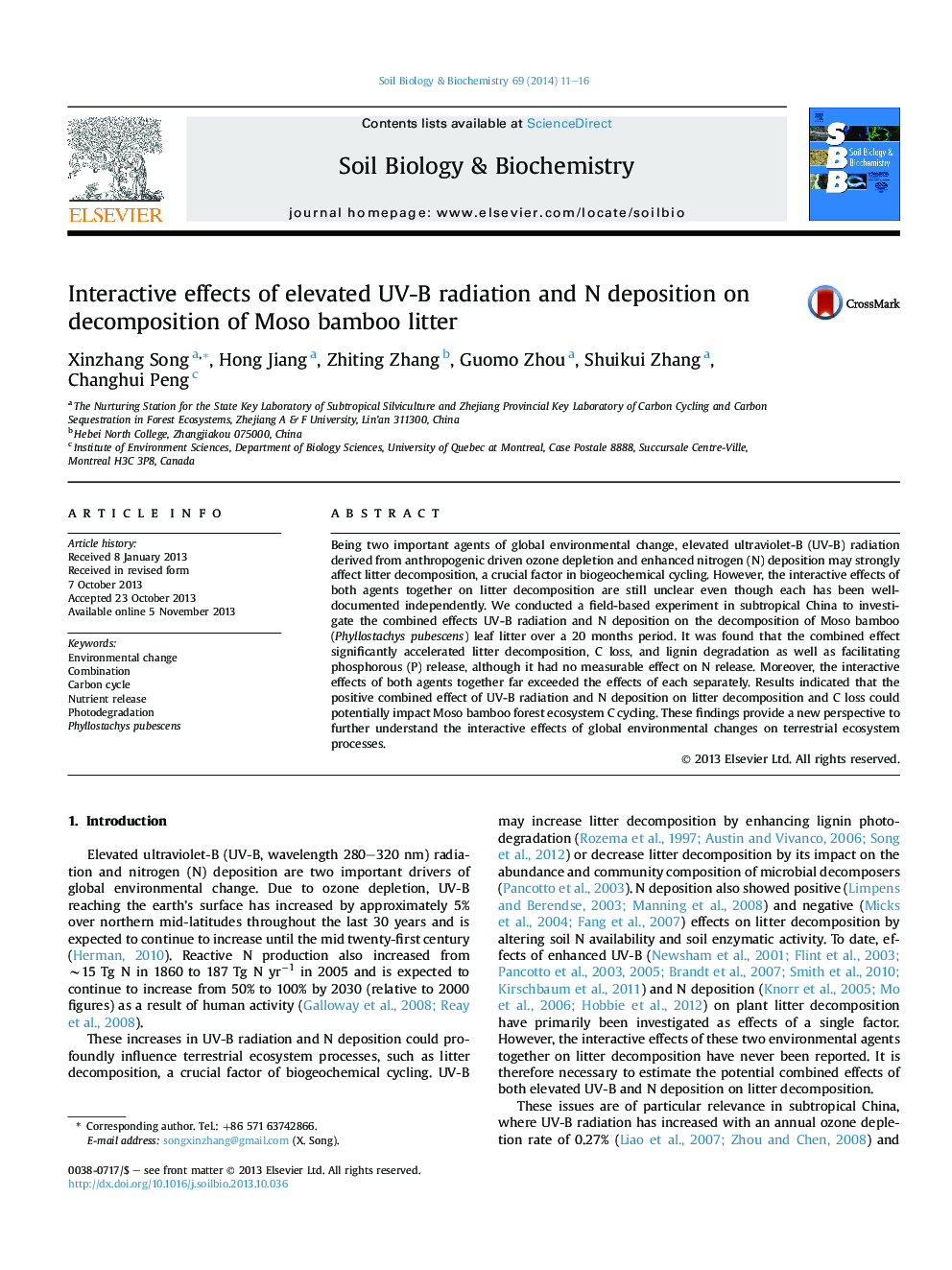| Article ID | Journal | Published Year | Pages | File Type |
|---|---|---|---|---|
| 2024707 | Soil Biology and Biochemistry | 2014 | 6 Pages |
•Combined UV-B and N deposition significantly accelerated Moso bamboo litter decay.•Combination of two factors facilitated C loss, lignin degradation and P release.•Combination of both factors did not affect on N release.•The interactive effects of two factors far exceeded the effects of each separately.
Being two important agents of global environmental change, elevated ultraviolet-B (UV-B) radiation derived from anthropogenic driven ozone depletion and enhanced nitrogen (N) deposition may strongly affect litter decomposition, a crucial factor in biogeochemical cycling. However, the interactive effects of both agents together on litter decomposition are still unclear even though each has been well-documented independently. We conducted a field-based experiment in subtropical China to investigate the combined effects UV-B radiation and N deposition on the decomposition of Moso bamboo (Phyllostachys pubescens) leaf litter over a 20 months period. It was found that the combined effect significantly accelerated litter decomposition, C loss, and lignin degradation as well as facilitating phosphorous (P) release, although it had no measurable effect on N release. Moreover, the interactive effects of both agents together far exceeded the effects of each separately. Results indicated that the positive combined effect of UV-B radiation and N deposition on litter decomposition and C loss could potentially impact Moso bamboo forest ecosystem C cycling. These findings provide a new perspective to further understand the interactive effects of global environmental changes on terrestrial ecosystem processes.
